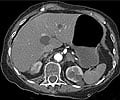Smoking, like all bad habits, is easily acquired but quite difficult to stop. All habitual smokers who would like to quit, need professional help or at least have to try out recommended smoking cessation methods.
It has been found that, youngsters between the ages of 16 and 24 years do try to quit smoking but meet with failure, as they do not try out tested methods.An article presented in Morbidity and Mortality Weekly Report, a publication of the US Centers for Disease Control and Prevention, described results of the 2003 National Youth Smoking Cessation Survey.
In it, quitting behavior studied in 1,827 young "established" smokers aged 16 to 24 years is reported. "Smokers who had ever tried to quit were asked about their knowledge of, and perceived availability of, and use of assisted and unassisted quitting methods," the report states.
The article says that there are six suggested quitting methods for adults. They are, talk to a health professional, use nicotine-replacement products, use bupropion (eg, Zyban), talk with a counselor, attend a program or class, and call a help line. Among these only one of the six methods,(talk with a health professional) was tried by about 20 percent of young people surveyed.
It was found that instead, several unassisted methods that were not recommended by the US Public Health Service were tried by around 36 percent of respondents. The most common unassisted approach-- cutting back on the number of cigarettes smoked in a day- was tried by 88.3 percent of those who wanted to quit.
The other five common unassisted methods were--not buying cigarettes( tried by 56 percent of young smokers), exercising more (51 percent), trying to quit with a friend (47.5 percent), telling others they quit (44.5 percent), and switching to light cigarettes (36.1 percent).
Advertisement
Men on the other hand were more likely than women to try exercise and other alternatives like switching to chewing tobacco, snuff, or other tobacco products. "The high proportion of respondents who tried to quit smoking by switching to light cigarettes or other tobacco products is "a concern because such strategies might undermine successful cessation," the report states.
Advertisement
Source-Medindia
PRI











